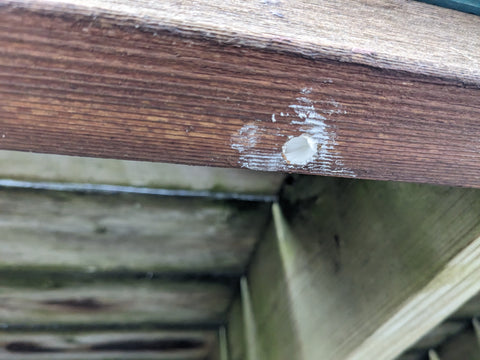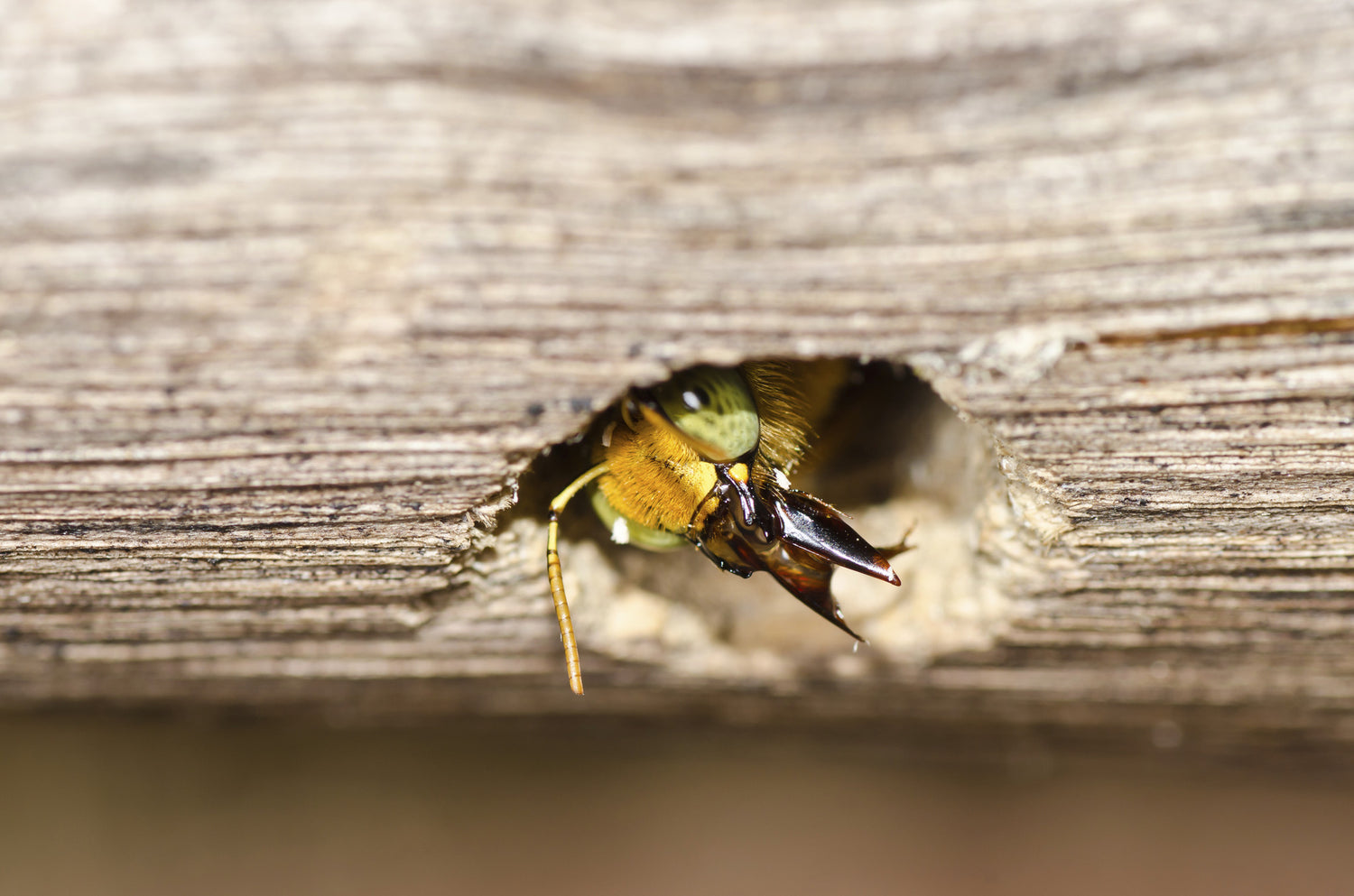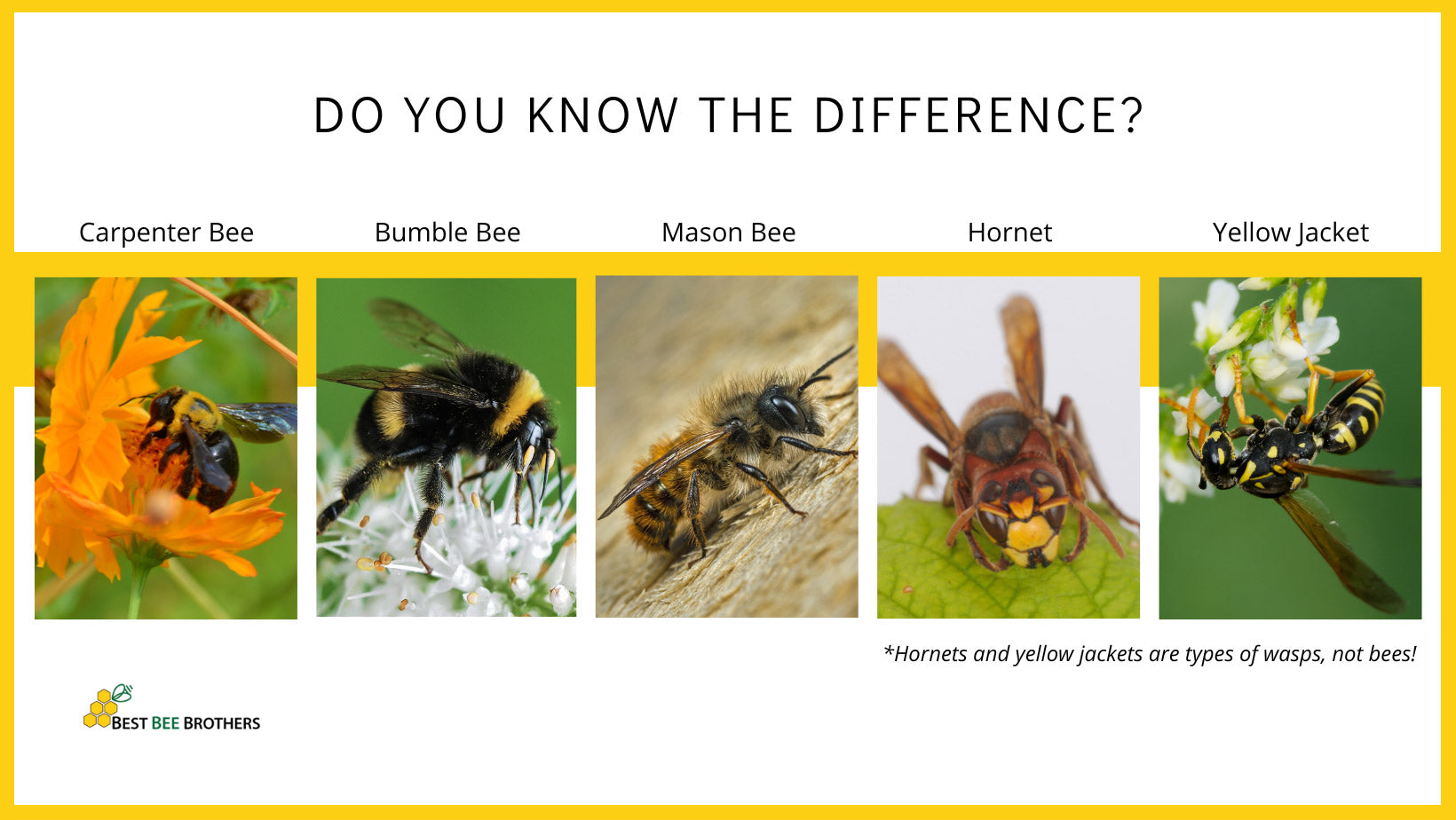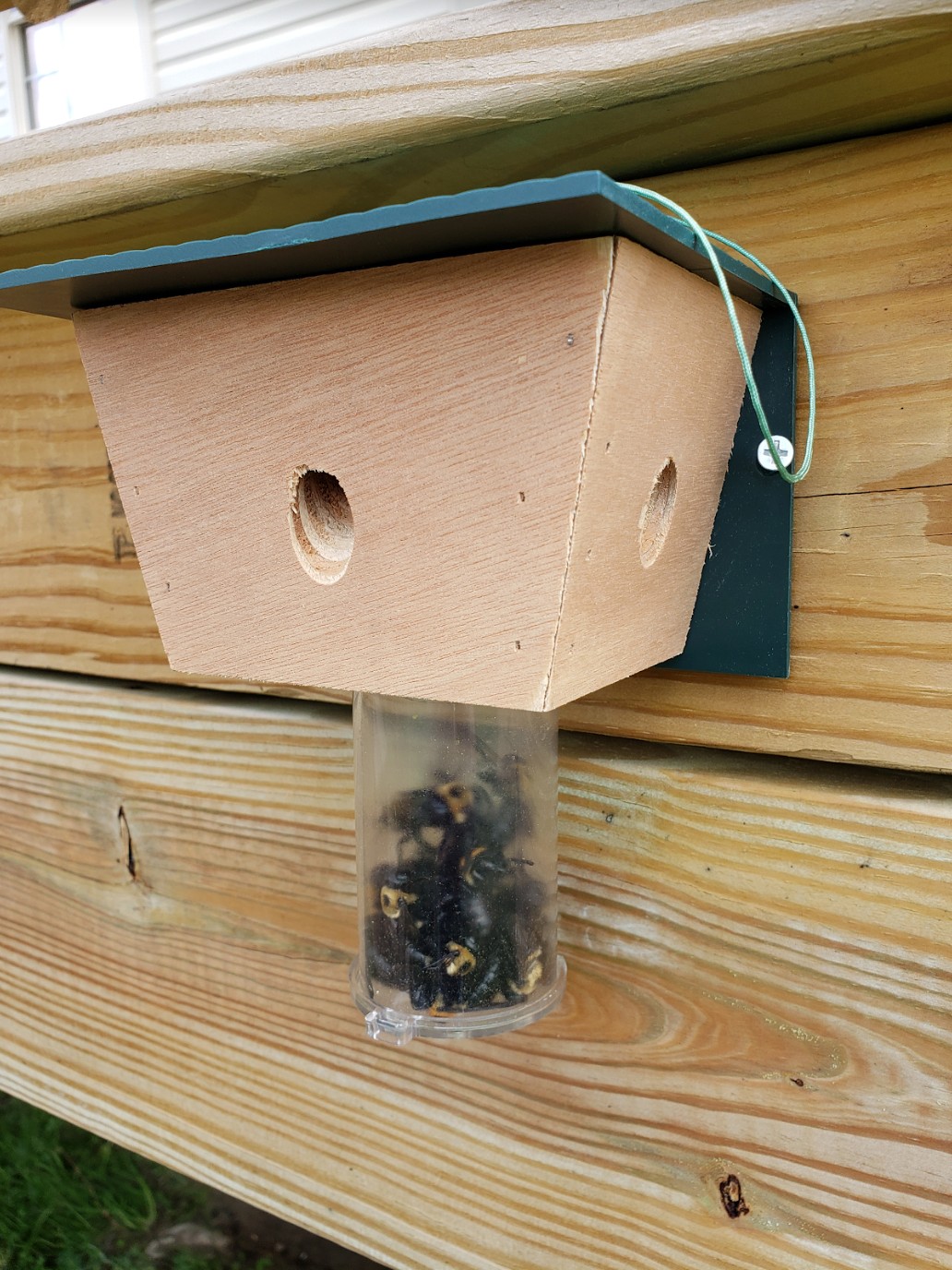
Filling Carpenter Bee Holes
While we recommend filling carpenter bee holes anytime the weather is warm, the two most important times of the year are spring and fall.
In spring, young carpenter bees emerge from the nests where they were born, ready to mate and build their own nests. This typically takes about 2-3 weeks. Once the wood bees have found their mate and collected food, it is time for nest construction. Depending upon where you live, carpenter bees can appear as early as the end of February in the southern states and as late as the end of May in the northern states. Since carpenter bees take the easiest route, they will try to find old nests before expending the energy to build a new one. Your goal is to fill those holes before the nesting period even begins.
By the fall, carpenter bee season is ending, but that doesn't mean the end of carpenter bee maintenance. Since the bees already laid their eggs in nests, plugging the holes in the fall is a proactive way to prevent young carpenter bees from emerging in the spring.

How to Plug Carpenter Bee Holes
There is a bit of a debate on successfully plugging a carpenter bee nest. One known method is applying wood putty at a nest's entrance hole. This method can be satisfactory when time is short and you need to keep the adult bees away from their new nest. However, this method will not prevent young bees from drilling their way out next spring.
An alternative method is to use wood filler caulk to close up the hole, suffocating the larvae inside. While this method proves to be more effective, it tends to create issues once the caulk dries. Once dry, it may not completely fill the nest's interior and may create divots on the nest's exterior.

Here is a carpenter bee hole filled in by chalk. (Photo submitted by customer)
Here at Best Bee Brothers, we have found the best method is to plug carpenter bee holes with wooden corks. Best Bee Brothers offers Hand Dipped Wooden Corks in two sizes. Or, for a convenient, all-in-one solution, try our Total Bee-Fense Kit for Carpenter Bees.
The Total Bee-Fense Kit was designed for those who have an existing carpenter bee infestation and are looking to increase the effectiveness of their Carpenter Bee Trap(s) or are preparing for fall!
Repairing Damage from Carpenter Bees
To repair carpenter bee damage, follow these three easy steps:
1. Locate all of the carpenter bee nests around your home.
- Check all the high and low spots of your home, including eaves and dormers on the roof.
- Carpenter bees love warmth, so pay close attention to the southern exposure of your house.
- Look for piles of sawdust shavings and brownish stains that indicate carpenter bee activity.
2. Eliminate any bees or larvae left in the nest.
- Some suggest using a cotton ball soaked in isopropyl alcohol (aka rubbing alcohol) and placing it as far into the tunnel as possible. The fumes from the alcohol will kill any remaining bees.
- Some people use a spray or dust pesticide. But we don’t recommend harsh chemicals and pesticides for many reasons, including environmental concerns and personal safety.
- If you want to avoid the first two options, try our Bee-Destroyer Stake found in our Total Bee-Fense Kit.
3. Place the Hand-Dipped Wooden Corks
- Insert a wooden cork into each entrance, placing the rubberized end into the holes.
- Blocking the entryway with a rubberized surface will create a comprehensive barrier that enterprising carpenter bees can’t chew through.
- Once the cork is placed inside, you’ll want to continue pushing it into the hole until the rubber is flush with the adjacent wooden surface, or as near to flush as possible.
To help prevent carpenter bees from nesting in the first place, be sure to put up your Best Bee Traps at the beginning of spring!










16 comments
Customer Support
@Manuel – Carpenter bees will be looking for a structure that gives them plenty of room to nest. Since most woodchips aren’t too large, I wouldn’t expect them to nest in your woodchips. ~Customer Support
Manuel A Rodriguez
Do Carpenter Bee make a nest in the garden ? I have the stained wood chips covering my entire garden. Please let me know so I can start looking for their nest. I see them flying around but can not find their nest.
Customer Support
@Randy – Preparing is the best approach! Best results occur when traps are placed at the corners and peaks of buildings and hung with the provided wire hanger. It is not recommended to hang a trap under a rafter as the bees are less likely to see the hole. Also to note is their preference to the sunny side of your structure as carpenter bees are attracted to warmth. Be sure to hang in the early spring before nesting season starts! ~Best Bee Brothers
Randy
My wife and I are rebuilding and redesigning a cabin in Northern Pennsylvania and siding it with natural, rough-cut hemlock. I would like to use your traps in a preventive manner before the carpenter bees do extensive. Are there general recommendations as to where (south, north, close to the home, distance, etc.) your traps should be placed for best results?
Customer Support
@Tim – Sounds like woodpeckers going after the larva. They will tear about the holes. If it was carpenter bees you would only see saw dust like shavings. ~Best Bee Brothers
Leave a comment
All comments are moderated before being published.
This site is protected by hCaptcha and the hCaptcha Privacy Policy and Terms of Service apply.